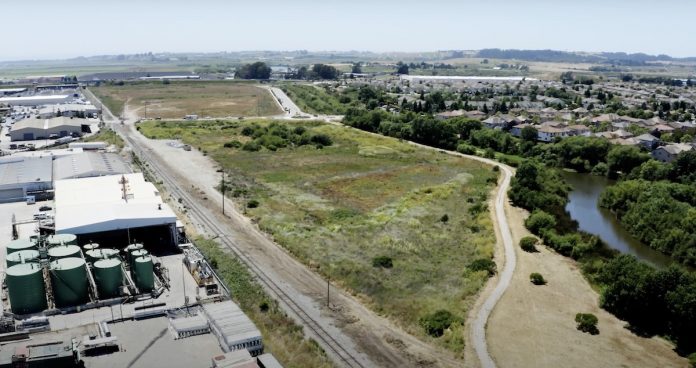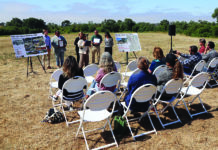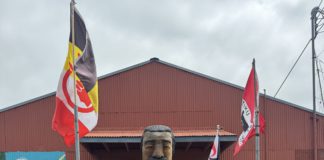
SANTA CRUZ COUNTY—A group of local transportation organizers is hoping that, within the span of a decade, a passenger rail will run from Watsonville to Santa Cruz, making stops at hubs where busses will whisk passengers to further destinations.
For commuters who wish to eschew motorized transportation in its entirety, a 32-mile bike and pedestrian path will run alongside the train tracks from Davenport to Watsonville.
This ambitious project is the vision of Friends of the Rail Trail (FORT), which on June 24 launched Coast Connect, a group tasked with drumming up community interest and support for the project.
The rail-trail project would provide an economical way to get to work and reduce traffic, and take a chunk out of the county’s greenhouse gas emissions, more than half of which comes from vehicles, said FORT Board Chair Sally Arnold.
The project, described by supporters as a “complete transportation solution,” could also make cross-county day trips possible for residents, further bolstering the economy, Arnold says.
“Our primary purpose is to help people envision what life could be like if we had a rail-trail service,” she said. “It’s going to make life better for people in the community and it’s going to help the economy.”
FORT has been working to make a bike and pedestrian path next to the rail line since 2002, a project that rail supporters say could connect the Central Coast to the greater Bay Area transportation infrastructure and, by extension, to the rest of the world.
With 20 separate segments of trail stretching throughout the county, each jurisdiction will be responsible for their sections of the trail. In places, that work has already begun.
In Watsonville, a stretch that runs from Lee Road to Ohlone Parkway is slated to open in the fall.
“Not only does the rail line provide our local economy and companies and provide hundreds of jobs, but I’m really excited that it can also bring passenger rail on that very same line,” Watsonville City Councilman Felipe Hernandez said. “Let’s start now, planning now for a solution that truly includes Watsonville with high-quality passenger rail transit.”
In Santa Cruz, a one-mile stretch of trail from Bay Avenue to Natural Bridges Drive is estimated to be completed by September.
The trail is slated to be complete by 2030, and the rail line will soon follow, organizers say.
And the plan has largely been green-lighted.
The Santa Cruz County Regional Transportation Commission (RTC) in 2018 approved a plan to allow Lakeville, Minn.-based Progressive Rail, Inc. to take over the rail-freight operations in South County. The company’s plans at the time included possible passenger service.
A Santa Cruz County Superior Court judge rejected a legal challenge to the company’s contract in 2019.
The RTC is now mulling options for what the rail line will look like, and will present the best option to the public in September.
The project also has its detractors, including the groups Santa Cruz County Greenway and Trail Now, both of which hope to see the tracks replaced in their entirety with a bicycle and pedestrian path.
Trail Now Executive Director Brian Peoples says that the county’s system of tracks and aging trestles is not equipped to handle the estimated 60 trains per day traveling 45 miles per hour.
Peoples also says that the rail line is not wide enough to safely hold a train and trail.
“We think the rail is a waste of time and money,” said Peoples, who envisions a future when not rail, but legions of people on foot and bicycle—and a fleet of pedicabs—helps to reduce traffic and lessen greenhouse gasses.
But all of the group’s concerns have already been addressed, said FORT member Mark Mesiti Miller, who pointed out that the Regional Transportation Commission in a rare unanimous vote showed its support for the rail-trail project.
The passenger rail service portion of the project will cost an estimated $325 million. It is funded by Measure D, the 2016 half-cent sales tax created to fund countywide transportation projects, which provides about $1.6 million per year for infrastructure preservation of the rail corridor. In addition, the State Rail Plan identifies $1.5 Billion for projects in the Central Coast area, some of which will be allocated for the project.
The rail-trail will cost $283 million, and will also be funded by Measure D, as well as a mix of state and federal funding. Funding for both portions of the project will also come from donations and local matching funds.
“This project will change the way people get around forever,” Miller said.












